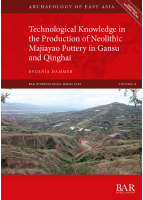Description
This book is the first comprehensive study of the technological knowledge needed to produce Neolithic Majiayao-style pottery (5300-4000 cal yr BP) which is famous for its painted designs in black and red. It examines the technological choices in the production of fine and coarse Majiayao-style pottery found across three river valleys, all located near the border area of Chinese provinces Gansu and Qinghai. Through macroscopic examination, thin-section petrography and experimental archaeology, this book investigates how the same pottery style was made across this large geographical area. Specifically, the study examines whether similar technological knowledge in pottery production at different places is connected to a yet unknown social knowledge shared by prehistoric communities. This book suggests that shared social knowledge could be the reason behind the wide distribution of this pottery style and its production technology.Seven appendices are available online to download, including primary data, photos, and photomicrographs from macroscopic and microscopic analyses of archaeological pottery and sampled geological material.
AUTHOR
Evgenia Dammer completed her DPhil at the University of Oxford in prehistoric pottery technology with a focus on ceramic petrography and experimental archaeology.
REVIEW
‘This book reports detailed macroscopic observations and new petrographic data on a large sample of Majiayao-style pottery. The argument that transfer of technological knowledge existed among the study area is well supported by the data. Many new questions are proposed, which will undoubtedly attract great scholarly attention.’ Dr Tao Li, Max Planck Institute











